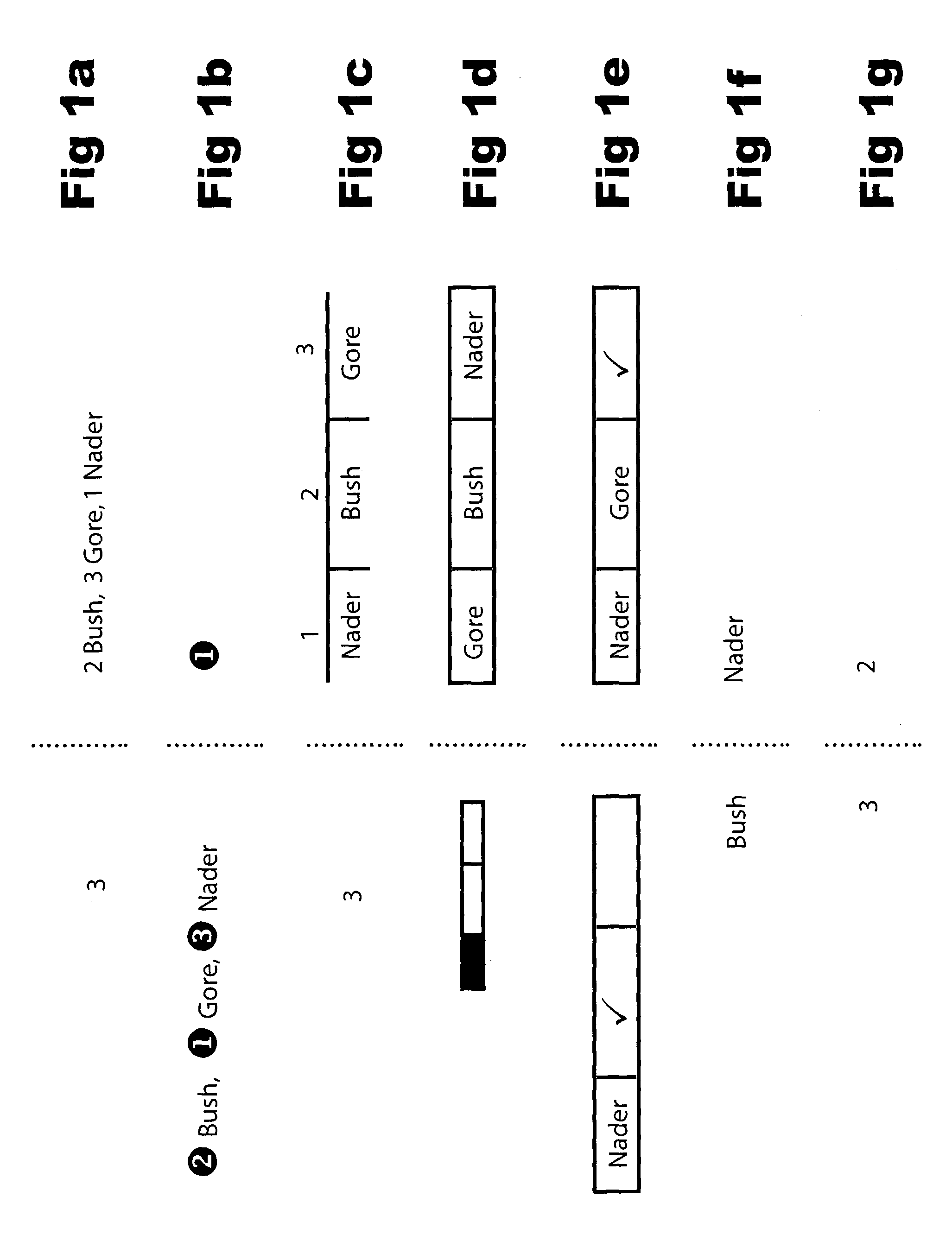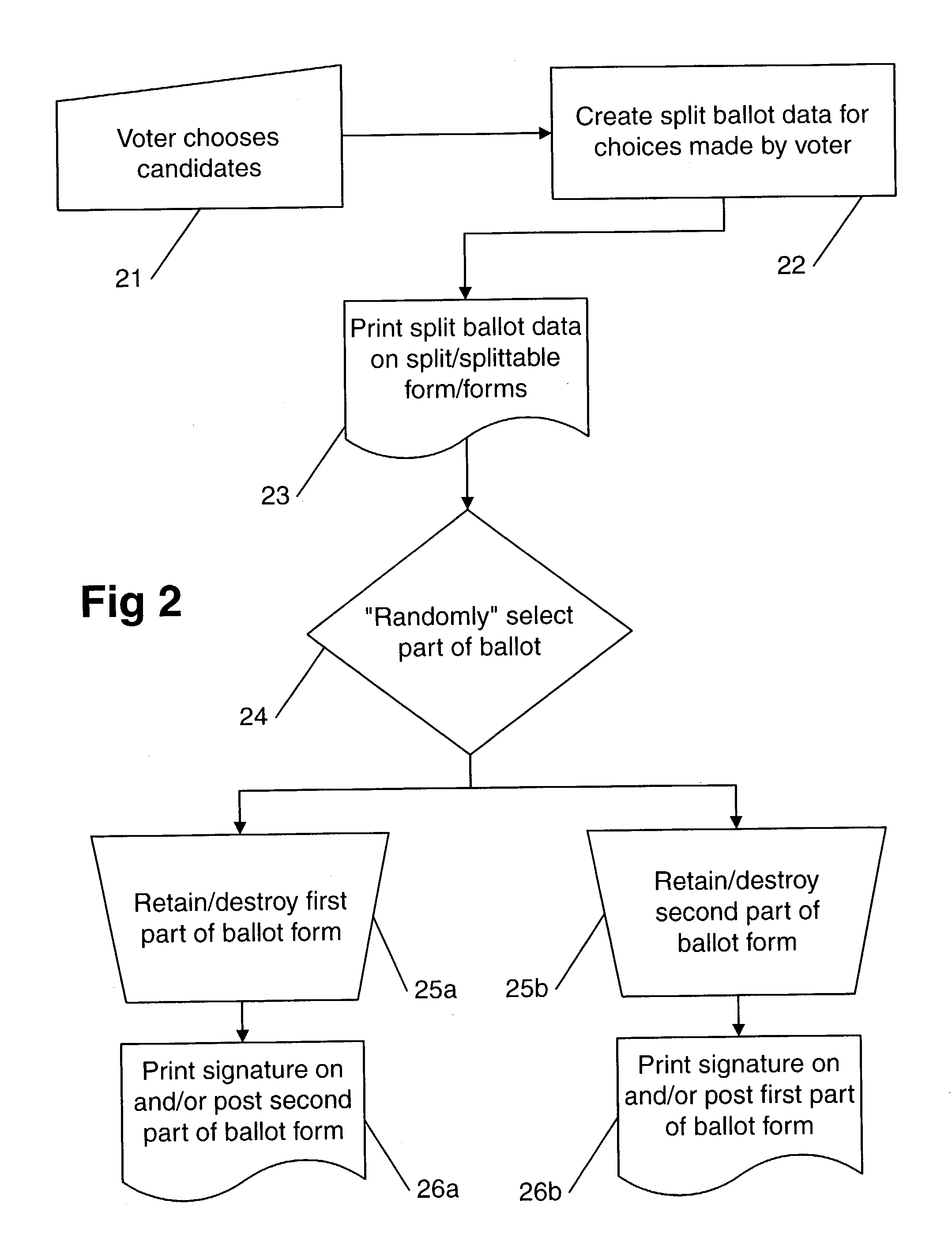Secret-ballot systems with voter-verifiable integrity
- Summary
- Abstract
- Description
- Claims
- Application Information
AI Technical Summary
Benefits of technology
Problems solved by technology
Method used
Image
Examples
Embodiment Construction
[0136]Detailed descriptions are presented here sufficient to allow those of skill in the art to make and use the exemplary preferred embodiments of the inventive concepts disclosed.
[0137]The application titled “Physical and Digital Secret Ballot Systems,” PCT / US01 / 02883 filed 29, Jan. 2001, by the present applicant, is hereby included here in its entirety by reference.
[0138]Turning now to FIG. 1, seven example ways to split ballot information are shown. Each shows the two parts separated by a dotted line. It is believed that taken together the two parts determine the choice of candidate, but that either of them taken separately does not reveal anything about which candidate was chosen (as already described).
[0139]Referring to FIG. 1a, for instance, the value on the left is the label of the candidate in the list on the right. The list is in order, except that a random cyclic shift has been made in the ordering of the labels. Clearly “Bush” is the selected candidate, because the label...
PUM
 Login to View More
Login to View More Abstract
Description
Claims
Application Information
 Login to View More
Login to View More - R&D
- Intellectual Property
- Life Sciences
- Materials
- Tech Scout
- Unparalleled Data Quality
- Higher Quality Content
- 60% Fewer Hallucinations
Browse by: Latest US Patents, China's latest patents, Technical Efficacy Thesaurus, Application Domain, Technology Topic, Popular Technical Reports.
© 2025 PatSnap. All rights reserved.Legal|Privacy policy|Modern Slavery Act Transparency Statement|Sitemap|About US| Contact US: help@patsnap.com



